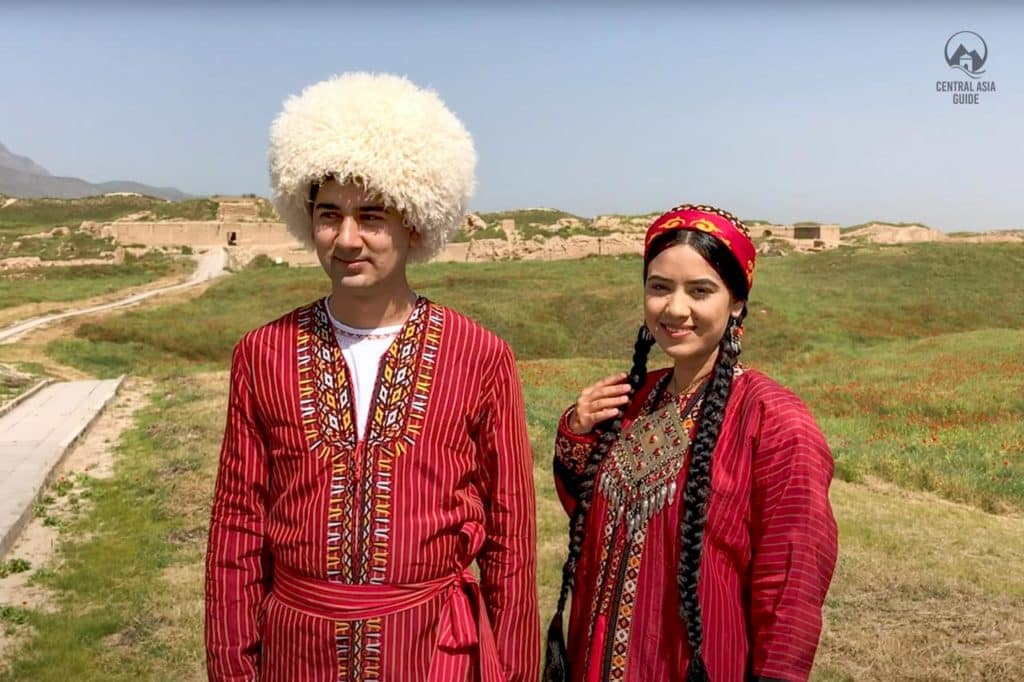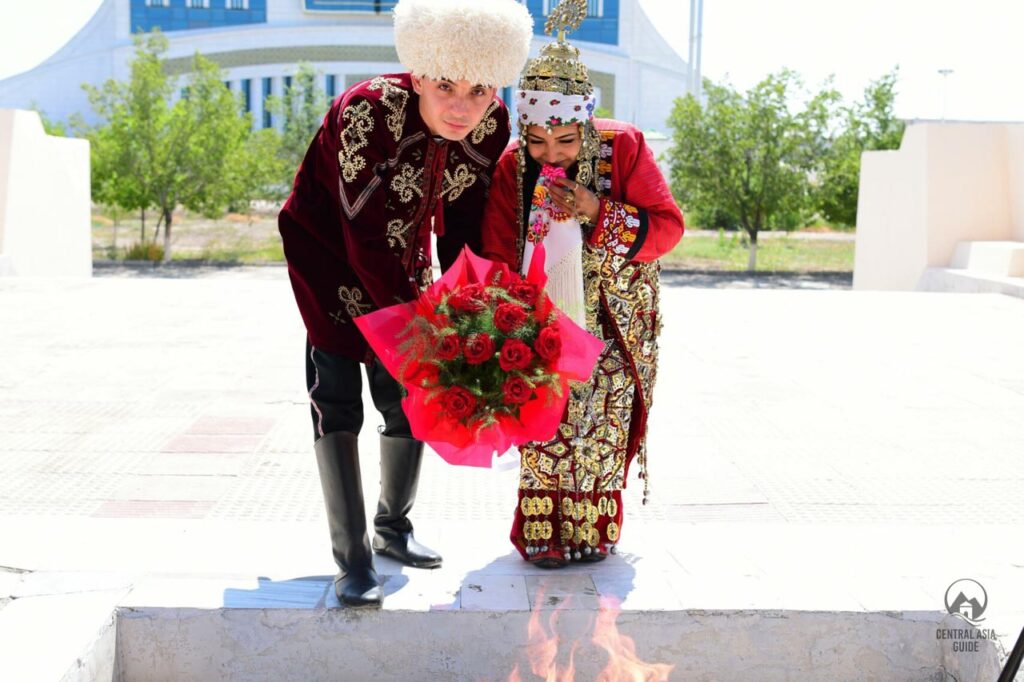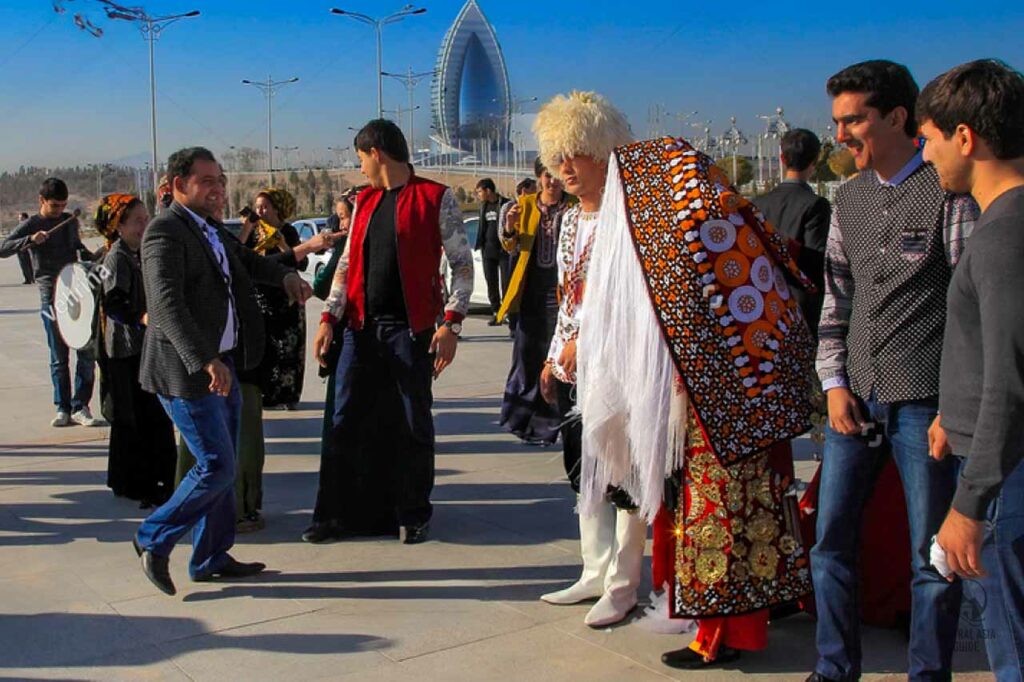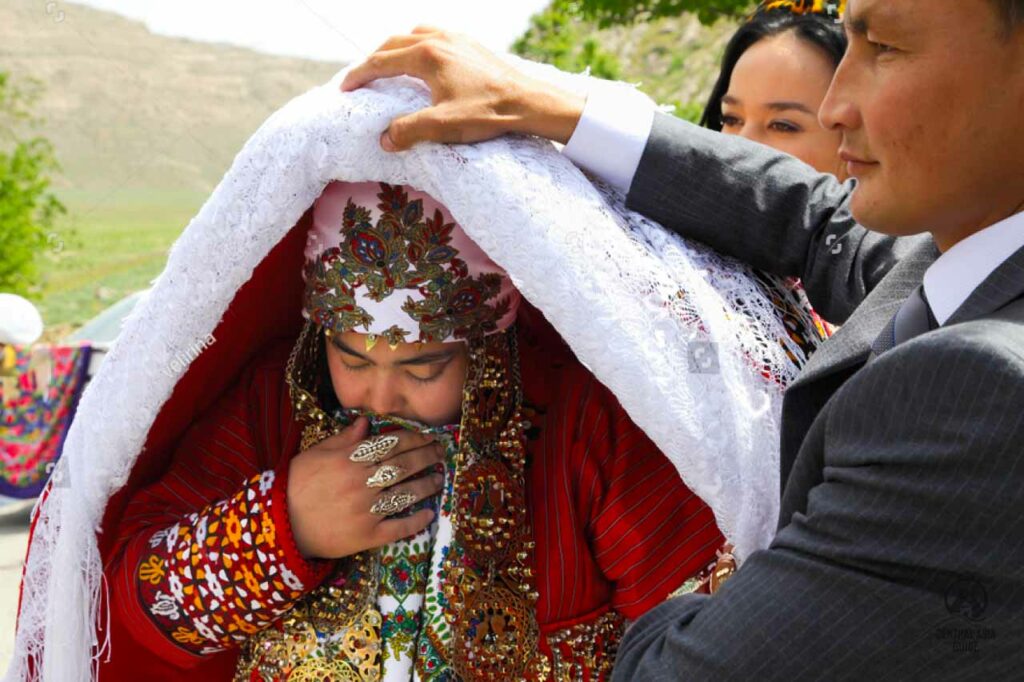Turkmen Wedding
Wedding in Turkmenistan
Turkmen people place immense significance on weddings as they represent the continuation of community life and the dominance of family in society by symbolizing the marriage of their children. Turkmen culture traditionally consists of large families and weddings provide an opportunity to reunite with relatives who live far away, as well as demonstrate one’s status to the neighbors with the grandeur of the celebration. Turkmen weddings involve both civil and religious ceremonies, followed by a celebration with dancing and food.
Arranged marriages in Turkmenistan
Weddings in Turkmenistan are important social occasions and arranged marriages are still common. The youth can also arrange their own matches but parental approval is essential. Dating before marriage is still frowned upon in many places, but it is becoming more accepted in cities such as Ashgabat. Before a marriage can take place, the groom’s parents must visit the bride’sfamily to ensure that she is a suitable match, and a bride-price is negotiated. The size of the wedding is determined by the groom’s family’s financial means and for many it can be a significant expense.


"Kalym" Dowry in Turkmenistan
The ancient practice of paying a substantial amount to the bride’s family, known as “kalym,” is experiencing a resurgence in Turkmenistan, with increasing sums of money being exchanged. This tradition was banned during the Soviet era but has regained popularity, with 90% of Turkmen marriages since 2011, involving a kalym payment. The payment can reach up to $10 000, with the highest prices paid for marrying a woman with a university education, a public sector job or a valued traditional skill.
The groom’s family also bears all expenses associated with the wedding. Therefore, parents often save money for their son’s wedding from an early age. While the ransom can be an opportunity for the bride’s family to improve their financial situation, newborn boys are still preferred over girls since they will often stay with their parents even after marriage.
Marring a Turkmen with foreigner is allowed but the foreign citizen must pay a fee to the Turkmenistan government as a compensation. There is also permission required from the ministry of foreign affairs of Turkmenistan that can involve heavy bureaucracy and a lot of documents in the process.
Turkmen wedding dress
In Turkmen weddings, the attire worn by the bride is commonly red and adorned with symbols and charms that are thought to possess magical properties of protection and purification. The bride’s outfit typically features amulets designed to safeguard her against negative forces, keep her in good health, and bring her wealth and prosperity. The wedding dress itself is usually made of traditional red fabric to evoke envy and attract an “evil eye” that is believed to protect the bride from harm. To ward off external negative energies, the bride wears a head covering cape along with various amulets and charms that are believed to possess protective powers.
A symbolic ceremony called bashsalma marks also the transition of the bride to a married woman, during which the groom’s youngest sister receives the bride’s maiden headdress. The wedding celebrations can vary depending on the location, but they usually involve a large number of guests and lots of festive decorations.


Turkmen wedding traditions
Wedding ceremonies have blended religious beliefs and ancient customs, resulting in the transformation of some traditions into symbolic or modified versions of their original meaning. However, despite these changes, weddings still retain their traditional characteristics such as the Henna night, where the bride and her close ones gather and decorate her hands and feet with the traditional henna designs. Afterwards there is a party with music dance and food.
During the celebration, there is lively music and dance performances in Turkmen weddings. Traditional folk dances including the Lezgi are still often a big part of Turkmen wedding celebration.
A symbolic ceremony called bashsalma marks the transition of the bride to a married woman, during which the groom’s youngest sister receives the bride’s maiden headdress. The wedding celebrations can vary depending on the location, but they usually involve a large number of guests and lots of festive decorations.
More about Turkmen culture
Page updated 28.3.2023